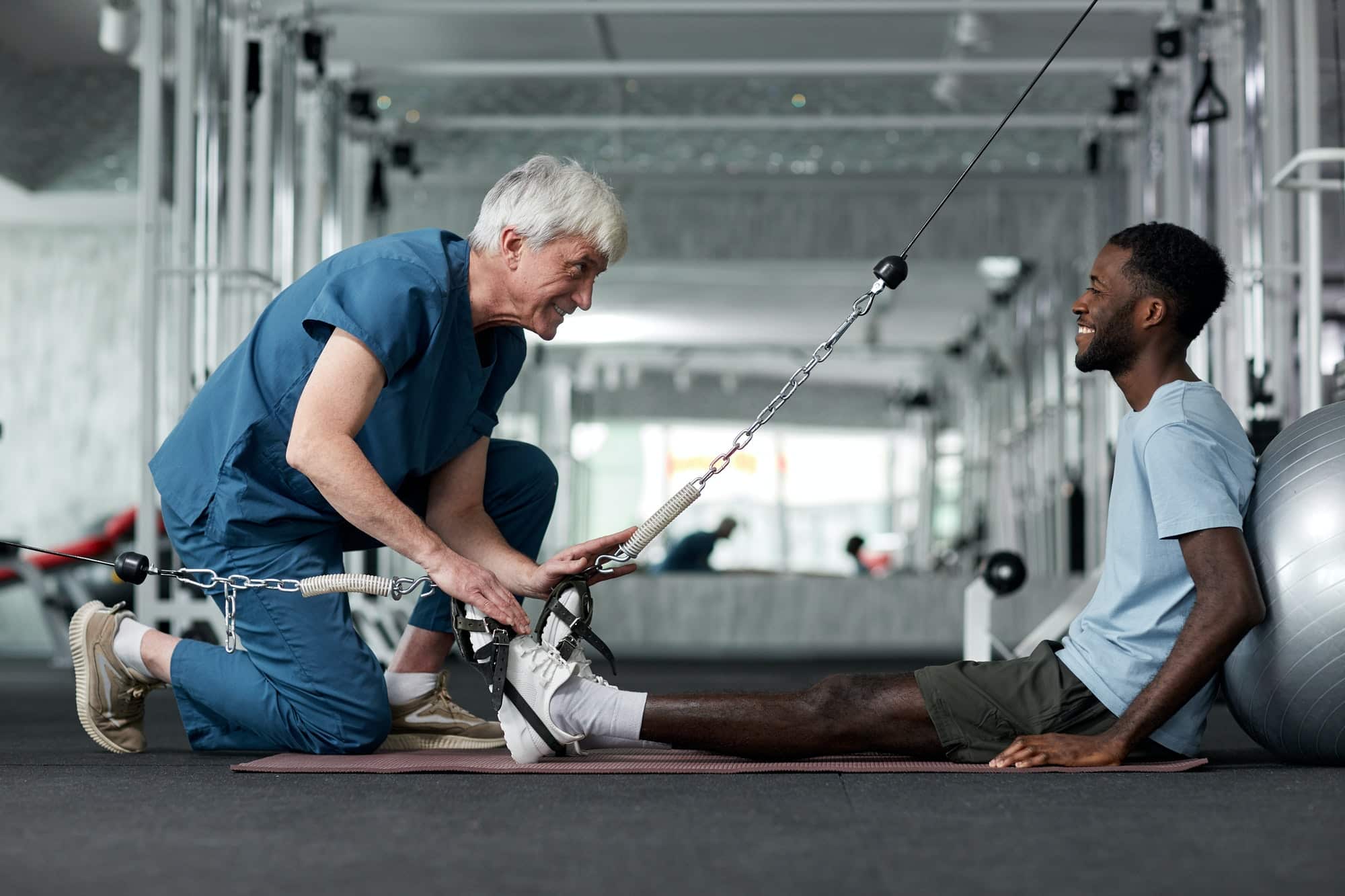How Can Multi-Axis Treadmills Improve Rehabilitation for Football (Soccer) Players?

In the high-paced world of sports, particularly soccer, injuries are a common occurrence. Among these injuries, knee and muscle injuries are more frequent. When these injuries occur, rehabilitation is a crucial phase to get players back on track. The conventional method of rehabilitation can sometimes be time-consuming and less effective, which led to the advent of modern methods. One such advanced rehabilitation technology is the multi-axis treadmill. This article throws light on how multi-axis treadmills can significantly improve the rehabilitation process for footballers.
The Science Behind Multi-Axis Treadmills
Before diving into how multi-axis treadmills aid in rehabilitation, let’s understand the science behind it. Multi-axis treadmills are designed to provide gait training and exercise in various directions – forward, backward, and sideways. They help in improving strength, balance, and overall performance.
A découvrir également : What Are the Most Effective Techniques for Improving Grip Strength in Rock Climbers?
A study published by Google Scholar and PubMed shows that compared to traditional treadmills, multi-axis treadmills result in greater muscle activation, particularly in the gluteal and quadriceps muscles. Another study from CrossRef seconds this finding, stating that multi-axis treadmills offer a broader range of motion, thus enabling an effective workout for different muscle groups.
The Role of Multi-Axis Treadmills in Injury Prevention
Injury prevention is a crucial aspect of sports, especially in high-intensity sports like soccer. HIIT (High-Intensity Interval Training) is a common training method to increase strength and fitness. However, it comes with a risk of injury. Multi-axis treadmills can help in preventing these injuries by enhancing the strength and flexibility of the muscles.
A découvrir également : How Can Custom Orthotics Improve Running Efficiency in Middle-Distance Track Athletes?
Crossref and PubMed have published findings on the role of multi-axis treadmills in preventing injuries. They concluded that athletes who trained on multi-axis treadmills had less risk of injury compared to those who used conventional treadmills. This is because multi-axis treadmills provide a more realistic running scenario that prepares the body better for the actual sport, thereby reducing the risk of injury.
How Multi-Axis Treadmills Contribute to Rehabilitation
Rehabilitation is a critical phase in the recovery of a soccer player from an injury. It not only includes physical recovery but also the rebuilding of strength and confidence. Multi-axis treadmills play a pivotal role in this phase by providing a controlled and safe environment for exercise and recovery.
Research by Google Scholar and PubMed indicates that soccer players who underwent rehabilitation on multi-axis treadmills returned to the field quicker than those who used traditional rehabilitation methods. It was also found that there was a significant increase in their performance post-rehabilitation.
Multi-Axis Treadmills in Strength Training
Strength training is an integral part of rehabilitation. It helps to regain the strength of the muscles that were affected by the injury. In soccer, the muscles of the lower body are primarily used, and any injury to these can significantly affect the player’s performance.
Multi-axis treadmills allow for strength training in all directions, thus providing a comprehensive workout for all lower body muscles. This leads to a significant improvement in strength and power, which is crucial for soccer players. Furthermore, since the workouts are in multiple directions, it mimics the actual movements in soccer, thereby making it more effective.
The Test Phase with Multi-Axis Treadmills
The test phase is a critical part of the rehabilitation process. It involves assessing the player’s ability to return to the field. Every soccer player needs to pass this test phase before they can resume playing. Multi-axis treadmills provide a realistic test scenario for the players, thus ensuring a comprehensive evaluation of their readiness to return to the field.
Studies from Google Scholar and CrossRef indicate that the test results from multi-axis treadmills were more accurate in predicting a player’s readiness to return to the field. This is because these treadmills mimic the actual movements in soccer more closely than conventional treadmills.
In conclusion, multi-axis treadmills are a significant advancement in rehabilitation technology for soccer players. They not only help in preventing injuries but also play a crucial role in rehabilitation and strength training. Furthermore, they provide a more realistic test scenario for assessing a player’s readiness to return to the field. Hence, multi-axis treadmills are indeed a game-changer in the field of sports rehabilitation.
The Impact of Multi-Axis Treadmills on Body Composition and Anaerobic Power
Body composition and anaerobic power are two vital aspects that multi-axis treadmills can significantly impact in sports med. Understanding body composition can provide insight into the player’s muscle mass and body fat, which can greatly influence their performance in soccer. On the other hand, anaerobic power is a short-term, high-intensity effort that offers a measure of a player’s power and speed, especially useful in football.
Several studies, including those from Google Scholar, have shown that multi-axis treadmill training can alter body composition, enhancing muscle mass while reducing body fat, leading to a more optimal body composition for soccer players. This machine can offer a high-intensity interval training program, which is known to be effective in transforming body composition.
Further, the multi-axis training also enhances anaerobic power. This improvement was particularly noted in a study published by PubMed. Soccer players who used a multi-axis treadmill showed significant improvement in their countermovement jump, a measurement of anaerobic power. Due to its ability to mimic more realistic movements, including rapid accelerations, decelerations, and changes in direction, this advanced treadmill trains athletes in a more sport-specific manner, thereby increasing their anaerobic threshold.
The Use of Multi-Axis Treadmills in Team Training and Youth Soccer
The benefits of multi-axis treadmills are not just confined to individual soccer players but can be extended to team training and youth soccer. These treadmills can be programmed for specific drills, enabling teams to train together. This kind of training can help in promoting team coordination and control chaos during the game.
In the case of youth soccer, introducing multi-axis treadmills early can have long-term benefits. A study from CrossRef supports this, noting that it can improve balance, strength, and injury prevention from a young age. It can also prepare them for the intensity of the game as they grow older. Hence, inculcating the use of multi-axis treadmills in the training program from an early age can be beneficial in the long run.
In Conclusion: The Game-Changing Role of Multi-Axis Treadmills
In conclusion, multi-axis treadmills have revolutionized the rehabilitation process for soccer players post-surgery. With their ability to emulate realistic movements in the game, they not only improve the effectiveness of rehabilitation programs but also enhance body composition, anaerobic power, and team training. Particularly in youth soccer, early exposure to multi-axis treadmills can set a strong foundation for future performance.
High-intensity interval training on these advanced machines can greatly influence an athlete’s performance, reducing the risk of injuries and promoting faster recovery. Given the promising results showcased in the studies from PubMed and Google Scholar, it is clear that these machines are indeed a game-changer in sports med. They not only bring about physical recovery but also rebuild players’ confidence, ensuring they are ready to return to the field at their best.
